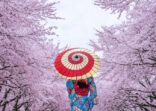Net sales for northbound funds sold under the Hong Kong-China Mutual Recognition of Funds (MRF) scheme reached a record high of RMB 15.86bn ($2.22bn) as of the end of August since the programme started in 2015, according to latest records from the State Administration of Foreign Exchange (SAFE).
The new record comes at a time when mainland investors have continued to pour money into Hong Kong-domiciled funds this year. Northbound funds had positive flows for seven consecutive months this year, with year-to-date net inflows of RMB 6.83bn. The net inflow is a huge turnaround from when investors redeemed a total of RMB 4.73bn between December 2017 and January 2019.
Northbound fund flows
| December 2017 – January 2019 (14 consecutive months of net outflows) | (RMB 4.73bn) |
| February 2019 | RMB 75.5m |
| March 2019 | RMB 1.34bn |
| April 2019 | RMB 976.3m |
| May 2019 | RMB 969.7m |
| June 2019 | RMB 1.45bn |
| July 2019 | RMB 2.45bn |
| August 2019 | RMB 466m |
| YTD total net inflows | RMB 6.83bn |
| Net inflows since the programme started | RMB 15.86bn |
Source: SAFE
However, monthly net sales slowed in August to RMB 466m, compared with RMB 900m – RMB 2bn monthly inflows from March to July.
Yoon Ng, director for Asia-Pacific insights at Broadridge Financial, said recently that there has been an increase in outbound investments from Chinese investors due to rising concerns about the US-China trade war and the slowing domestic economy.
Barbara Ferraresi, Broadridge’s director of global distribution solutions, added that bond funds have become this year’s winners in the MRF programme, particularly Asian hard currency and global currency bond funds. She explained that mainland investors were likely reacting to the plunging value of the RMB and sought a currency hedge for their investments.
In total, there are 14 northbound funds under the MRF scheme and 13 more products that are still waiting to be approved, with Pictet Asset Management being the latest to lodge an MRF application with the Chinese securities regulator.
Similarly, global bond funds sold under the qualified domestic institutional investor (QDII) scheme, which also offer mainland investors offshore exposure, had the highest net inflows of RMB 3.5bn among all QDII categories during the first half this year, according to latest data from Morningstar Direct.
The QDII scheme allows domestic fund managers to raise onshore money for offshore investments, within allocated quotas.
QDII fund flows (RMB m)
| QDII Global Bond | 3,500 |
| QDII Sector Equity | 872 |
| QDII Other | 603 |
| QDII Emerging Markets Equity | (15) |
| QDII Emerging Markets Allocation | (22) |
| QDII Commodities | (36) |
| QDII Asia-Pacific ex-Japan Equity | (65) |
| QDII Asia Allocation | (194) |
| QDII Global Equity | (280) |
| QDII Global Allocation | (453) |
| QDII Greater China Allocation | (555) |
| QDII US Equity | (1,073) |
| QDII Greater China Equity | (2,093) |
| Total net inflows | 189 |
Source: Morningstar Direct
Not all QDII funds saw net inflows, however. US and Greater China equity funds, for example, collectively had net outflows of RMB 3.1bn.
Southbound funds
On the other hand, southbound funds – China-domiciled funds sold in Hong Kong, had net outflows of RMB 20m in August. This year, redemptions totalled RMB 151.1m.
Southbound fund flows
| 2017 total inflows | RMB 239.83m |
| 2018 total inflows | RMB 96.55m |
| January 2019 | (RMB 3.47m) |
| February 2019 | RMB 6.01m |
| March 2019 | RMB 12.4m |
| April 2019 | (RMB 79m) |
| May 2019 | (RMB 39m) |
| June 2019 | (RMB 28m) |
| July 2019 | RMB 2m |
| August 2019 | (RMB 20m) |
| YTD outflows | (RMB 151.m) |
Source: SAFE
Since the MRF scheme started in 2015, the demand for southbound products has been weak, with total net inflows of RMB 281.5m, which is small compared to the much stronger northbound inflows of RMB 15.86bn.
Broadridge’s Ng said that southbound sales will likely remain muted as Hong Kong investors already have other existing options to have a China play without going through the MRF route.
The Securities and Futures Commission has approved around 50-domiciled funds to be sold in Hong Kong. However, only two dozen funds have been made available for sale to investors.

















